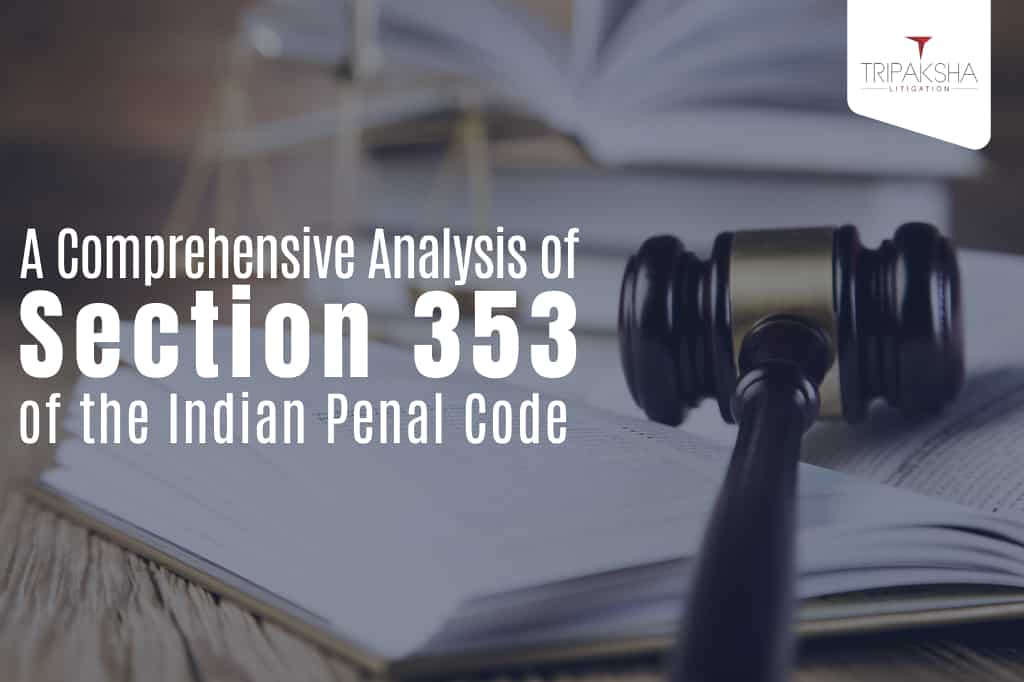Introduction:
Section 353 of the Indian Penal Code (IPC) stands as a pillar of legal protection, ensuring the unimpeded execution of duties by public servants. Rooted in the principle of upholding law and order, this provision delineates the offense of assault or criminal force against public servants in the discharge of their official duties. In this comprehensive analysis, we delve into the legal intricacies, historical context, elements, penalties, judicial interpretations, and practical implications of Section 353, elucidating its significance in maintaining the integrity of public service in India.Historical Context and Legislative Intent:
The genesis of Section 353 can be traced back to the colonial era when the British Raj promulgated the Indian Penal Code in 1860. The inclusion of provisions aimed at safeguarding public servants reflected the need to ensure the smooth functioning of governance amidst colonial rule. Over the years, Section 353 has evolved to reflect the changing socio-political landscape of independent India. Its legislative intent remains rooted in upholding the authority of public servants, safeguarding public interest, and fostering societal order.Understanding the Offense:
At its core, Section 353 encapsulates acts of assault or criminal force against public servants while they are engaged in the execution of their official duties. To constitute an offense under this provision, certain elements must be established. Firstly, there must be an act of assault, causing apprehension of imminent harm or offensive contact. Secondly, the accused must employ criminal force, either through physical force or by restraining the public servant from their duty. Additionally, the victim of the assault or force must hold the status of a public servant, encompassing government officials, police officers, or any individual authorized to perform public functions. Lastly, the offense occurs either while the public servant is in the execution of their duty or with the intent of preventing them from discharging their duty.Elements of the Offense:
The elements of assault and criminal force are fundamental to the offense under Section 353. Assault, as defined under Section 351 of the IPC, includes any act causing apprehension of harm or offensive contact. Criminal force, as delineated in Section 350, involves the use of force against another person’s body, property, or restraint of a person without consent. Furthermore, the victim of the assault or force must hold the status of a public servant, as defined under Indian law. The offense occurs either while the public servant is engaged in the execution of their duty or with the intent of impeding their duties. Thus, each element plays a crucial role in establishing the commission of the offense under Section 353.Penalties and Legal Ramifications:
Individuals found guilty under Section 353 may face penalties including imprisonment for a term extending up to two years, along with a fine. However, if the assault results in injury to the public servant, the punishment may be enhanced, with imprisonment for a term of up to three years. These penalties underscore the seriousness with which the law treats offenses aimed at obstructing or intimidating public servants in the discharge of their duties. Furthermore, the imposition of fines serves as a deterrent against such acts, emphasizing the societal importance of respecting the authority of public servants and upholding the rule of law.Judicial Interpretations and Precedents:
The interpretation and application of Section 353 have been elucidated through various judicial pronouncements. Notable cases, such as State of Maharashtra v. R.D. Singh (2008), have provided clarity on the requirements for invoking the provisions of this section. In this case, the Supreme Court emphasized that mere resistance or obstruction is insufficient to invoke Section 353; there must be accompanying assault or criminal force. Such precedents serve as guiding principles for the judiciary in adjudicating cases involving offenses under Section 353, ensuring consistency and coherence in legal interpretations.Practical Implications and Defenses Available:
In practice, the enforcement of Section 353 necessitates a careful examination of the circumstances surrounding the alleged offense. Accused individuals may avail themselves of certain defenses, such as self-defense or mistake of fact. The defense of self-defense may be invoked if the accused’s actions were proportionate and necessary to protect themselves from unlawful aggression by the public servant. Similarly, a defense of mistake of fact may be raised if the accused reasonably believed their actions were lawful or undertaken in self-defense. However, the applicability of these defenses depends on the specific facts and circumstances of each case, subject to judicial scrutiny.Conclusion:
In conclusion, Section 353 of the IPC serves as a cornerstone in upholding the integrity of public service and preserving the rule of law in India. By delineating the offense of assault or criminal force against public servants, this provision reinforces the societal imperative of respecting the authority and autonomy of those entrusted with public responsibilities. Through a nuanced understanding of its legal intricacies, penalties, judicial interpretations, and practical implications, citizens and public servants alike contribute to fostering a culture of accountability, transparency, and respect for the principles of governance. In essence, Section 353 stands as a testament to India’s commitment to ensuring the effective functioning of public service institutions and the preservation of democratic values.You may contact me for consultation or advice by visiting Contact Us and Call us

